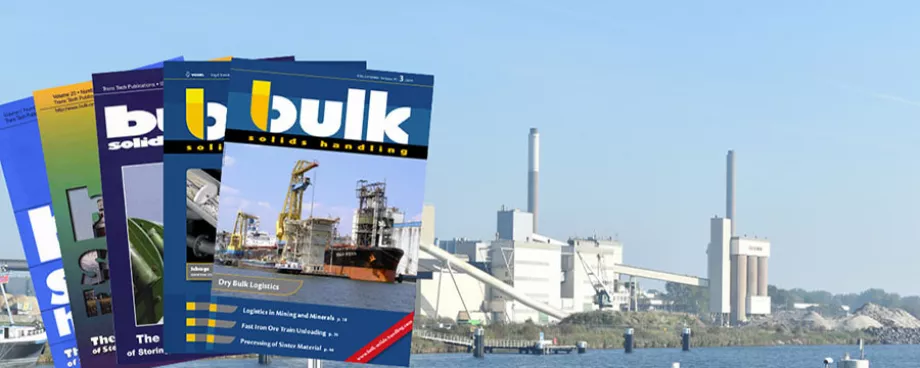Gravity-flow transfer chutes play an important rote in bulk solids handling systems. While in many cases the chute may serve merely as a device for directing the material to the discharge point, it is important that attention be given to the design in order to obtain satisfactory flow characteristics.
The chute may also be used as a flow-control device and, in this regard, it is possible to design the chute to achieve certain desirable flow conditions. For example, it may be a requirement that the horizontal component of the exit velocity is as large as possible in order to obtain the maximum ' throw ' of the material. Alternatively, where the material discharges onto a conveyor belt, it is desirable that the horizontal component of the exit velocity be matched with that of the belt. In this way, the acceleration of the material entering the belt is minimized, yielding some saving in belt-driving power and a reduction in the belt wear. In other cases it may be desirable for the time of travel of the granular particles through the chute to be a minimum in order to achieve a favourable flow pattern.
The flow of non-cohesive bulk solids through discharge or transfer chutes has been studied in some detail, a selected list of references being included at the end of this paper. In general there are two classes of flow that occur, namely steady state flow and transient flow. The steady state flow corresponds to the condition of constant discharge rate and it is this condition that is of fundamental importance from the point of view of chute design. A knowledge of the transient flow characteristics is of particular importance in those cases where feed or discharge rates are varied during controlled flow, as in blending or mixing operations. This paper is concerned only with the steady flow case and for chutes of specified geometry, in particular straight inclined chutes and circularly curved chutes of constant radii.
It is based primarily on the papers by Roberts [8,9] and Roberts and Arnold [12] which presented analyses and design procedures for the flow of non-cohesive granular materials through chutes for a range of geometrical chute profiles but of rectangular cross-section. The concepts embodied in these papers have been further developed by Parlour [13] and Montagner [25]. The present paper extends the analysis to include chutes of circular cross-section as well as introducing into the analysis parameters which attempt to cover more explicitly the flow properties of bulk solids.
■






















